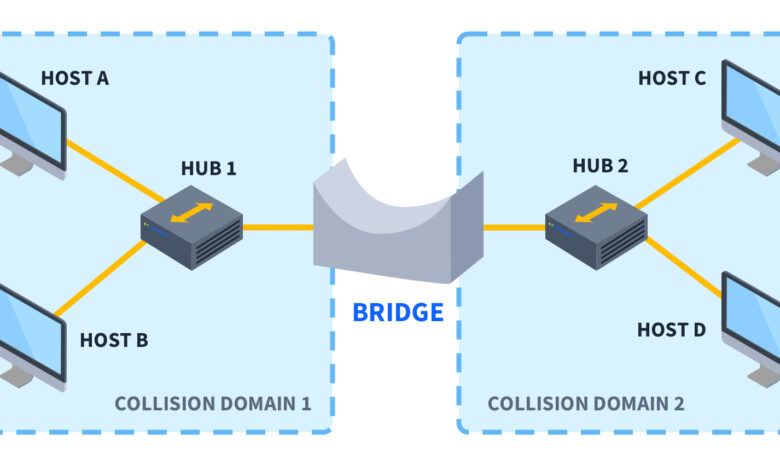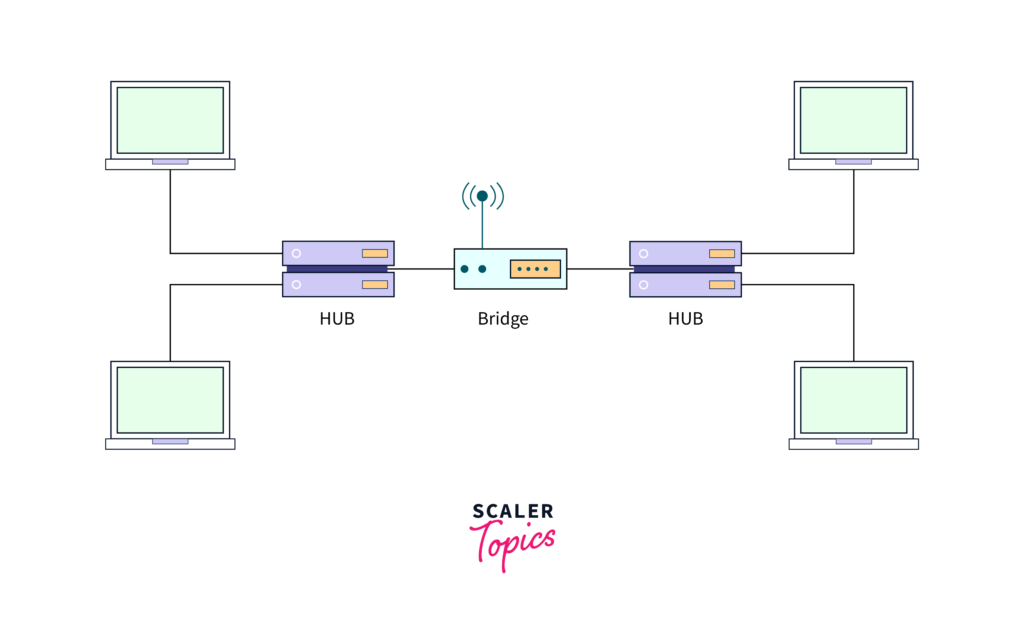What is Bridge in Computer Network? Understanding Its Role and Importance

- What is Bridge in Computer Network? A Simple Introduction
- Types of Bridges in Computer Networks: What You Need to Know
- How Does a Bridge in a Computer Network Improve Performance
- How a Bridge Works in a LAN: A Step-by-Step Breakdown
- Understanding the Functions of a Bridge in Computer Networking
- Conclusion
- FAQs
What is a Bridge in Computer Network? A bridge in a computer network is a device that connects multiple smaller networks together to create a larger network. It helps manage data flow between different parts of the network by determining where the data should go.
In simple terms, a bridge helps improve the performance of the network by splitting the load across multiple sections. This way, each section of the network has its own bandwidth, reducing traffic and making communication faster.
What is Bridge in Computer Network? A Simple Introduction

A bridge in computer network is a device that connects different parts of a network together. It helps computers and devices in separate areas communicate with each other. Imagine it like a bridge connecting two islands.
A bridge works by checking the addresses of the data it receives. When data arrives, the bridge looks at where it should go. It helps in managing traffic between different segments of the network. By doing so, it reduces the chances of a traffic jam and makes the whole system run more smoothly.
Types of Bridges in Computer Networks: What You Need to Know
There are several types of bridges that help manage different network setups. Understanding these can help you choose the right one for your needs. Let’s look at three main types:
- Transparent Bridge: A transparent bridge is often used in Ethernet networks. It works by examining the MAC addresses of devices. This bridge forwards or blocks data based on where it needs to go, without requiring extra setup from the network devices.
- Source Routing Bridge: This type of bridge was designed for token ring networks. It works by embedding the route information in the data packet itself. The packet knows exactly which path it must follow to reach its destination.
- Translational Bridge: A translational bridge helps connect different types of networks. For example, it can connect a token ring network to an Ethernet network. This bridge converts data between different systems so that they can communicate with each other.
Each type of bridge has its own strengths, so choosing the right one depends on your specific network needs.
How Does a Bridge in a Computer Network Improve Performance

A bridge in computer network plays a major role in improving the performance of a network. It does this by reducing network traffic and dividing large networks into smaller segments. This way, each segment can work independently, allowing devices to communicate without interference.
When a bridge divides the network, it reduces the chances of data collisions. This helps increase the speed of communication within each segment. Since data is only sent to the relevant segment, it also reduces unnecessary traffic, improving overall performance.
How a Bridge Works in a LAN: A Step-by-Step Breakdown
Let’s break down the working of a bridge in computer network in a simple way. Here’s how it works in a local area network (LAN):
- Receiving Data: The bridge receives data packets from different network segments, like Segment A and Segment B.
- Building a Table: The bridge builds a table by keeping track of the MAC addresses of the devices in both segments. This helps the bridge know which device belongs to which segment.
- Filtering Data: If the data packet is meant for a device within the same segment, the bridge stops it from going further. This reduces unnecessary data traffic.
- Forwarding Data: If the data needs to go to a different segment, the bridge forwards it to the right place. It ensures that the data reaches the correct destination.
This process helps keep the network clean, organized, and running smoothly.
Understanding the Functions of a Bridge in Computer Networking

A bridge in computer network has several important functions that help keep a network organized. It divides large networks into smaller parts, which reduces traffic and increases efficiency. Let’s explore some of these functions:
- Dividing the Network: The bridge divides the network into smaller segments. This allows for better control of the network’s performance and reduces the chances of data collisions.
- Filtering Traffic: The bridge filters data based on the MAC address. It only forwards data to the correct segment, keeping the network from becoming overloaded with unnecessary traffic.
- Connecting Networks: A bridge can connect two networks that use the same protocol. This helps different network segments work together without problems.
By performing these functions, the bridge helps your network stay fast and reliable.
Conclusion
In conclusion, a bridge in computer network is a helpful device that connects different parts of a network. It makes sure that data moves smoothly between different areas, preventing congestion and improving network performance.
Bridges are important tools that help manage network traffic and keep things running smoothly. Whether you’re connecting computers in a small office or organizing large data flows, using a bridge can make your network faster and more reliable.
FAQs
Q: What is the main function of a bridge in a computer network?
A: A bridge connects different segments of a network and helps manage data traffic between them. It makes the network faster and more organized.
Q: How does a bridge reduce network traffic?
A: The bridge filters data and only forwards it to the correct segment. This reduces unnecessary traffic and keeps the network efficient.
Q: Can a bridge connect different types of networks?
A: Yes, some bridges can connect different types of networks, such as Ethernet and token ring networks, making them work together smoothly.





